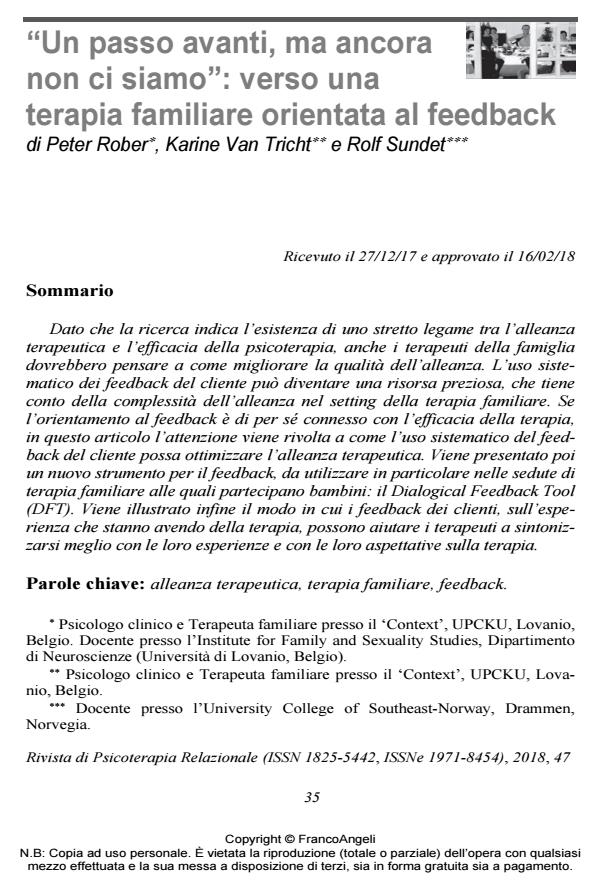"One step up, but not there yet": moving towards developing a feedback-oriented family therapy
Journal title RIVISTA DI PSICOTERAPIA RELAZIONALE
Author/s Peter Rober, Karine Van Tricht, Rolf Sundet
Publishing Year 2018 Issue 2018/47
Language Italian Pages 28 P. 35-62 File size 422 KB
DOI 10.3280/PR2018-047004
DOI is like a bar code for intellectual property: to have more infomation
click here
Below, you can see the article first page
If you want to buy this article in PDF format, you can do it, following the instructions to buy download credits

FrancoAngeli is member of Publishers International Linking Association, Inc (PILA), a not-for-profit association which run the CrossRef service enabling links to and from online scholarly content.
As research points to a strong link between the quality of the therapeutic alliance and the effectiveness of psychotherapy, also family therapists should be reflect on ways to improve the quality of the alliance. The systematic use of client feedback can be a rich resource as a response to the complexity of the alliance in the family therapy setting. While a feedback-orientation can give evidence of the effectiveness of therapy, in this paper the focus is on the ways in which the client’s systematic feedback can contribute to an optimization of the therapeutic alliance. A new feedback instrument is presented to be used especially in family therapy sessions in which children are involved: the Dialogical Feedback Tool (DFT). It is illustrated how the feedback of clients on their experiences in therapy can help therapists to better attune to the family members’ experiences and expectations about therapy.
Keywords: Therapeutic alliance, psychotherapy, feedback.
Peter Rober, Karine Van Tricht, Rolf Sundet, "Un passo avanti, ma ancora non ci siamo": verso una terapia familiare orientata al feedback in "RIVISTA DI PSICOTERAPIA RELAZIONALE " 47/2018, pp 35-62, DOI: 10.3280/PR2018-047004